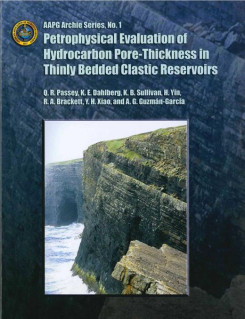Petrophysical Evaluation of Hydrocarbon Pore-Thickness in Thinly Bedded Clastic Reservoirs
Many siliciclastic oil and gas reservoirs contain significant volumes of recoverable hydrocarbons in intervals whose average bed thickness is below the resolution of conventional well-logging tools. In-place hydrocarbon volumes are difficult to evaluate accurately in these thin-bedded reservoirs. The authors conducted research on thin-bed evaluation methods during the years 1995-1998 and developed a set of methods and practices that been used worldwide by ExxonMobil since then. The present book describes these methods in the context of an integrated formation evaluation approach for thin-bedded reservoirs. The description is intended to provide useful information for both geoscience generalists and petrophysical specialists.
- Genre: All Books, Petrophysics, Sandstones
Cast & Characters
| 1-16 | The Clastic Thin-bed Problem |
| 17-26 | A Roadmap for Evaluating Thin-bedded Clastic Reservoirs |
| 27-40 | Definitions and Geologic Occurrence of Thin Beds in Clastics |
| 41-54 | Identification of Thin Beds using Well Data |
| 55-60 | Drilling, Coring, and Logging Programs for Thinly Bedded Formations |
| 61-72 | Petrophysical Properties of Thinly Bedded Formations |
| 73-90 | Characterizing Thinly Bedded Reservoirs with Core Data |
| 91-108 | Digital Core Imaging in Thinly Bedded Reservoirs |
| 109-132 | Borehole Image Logs in Thinly Bedded Reservoirs |
| 133-154 | Modeling Log Responses in Thinly Bedded Reservoirs |
| 155-172 | High-resolution Techniques |
| 173-192 | Low-resolution Techniques |
| 193-204 | Summary and Recommendations |

